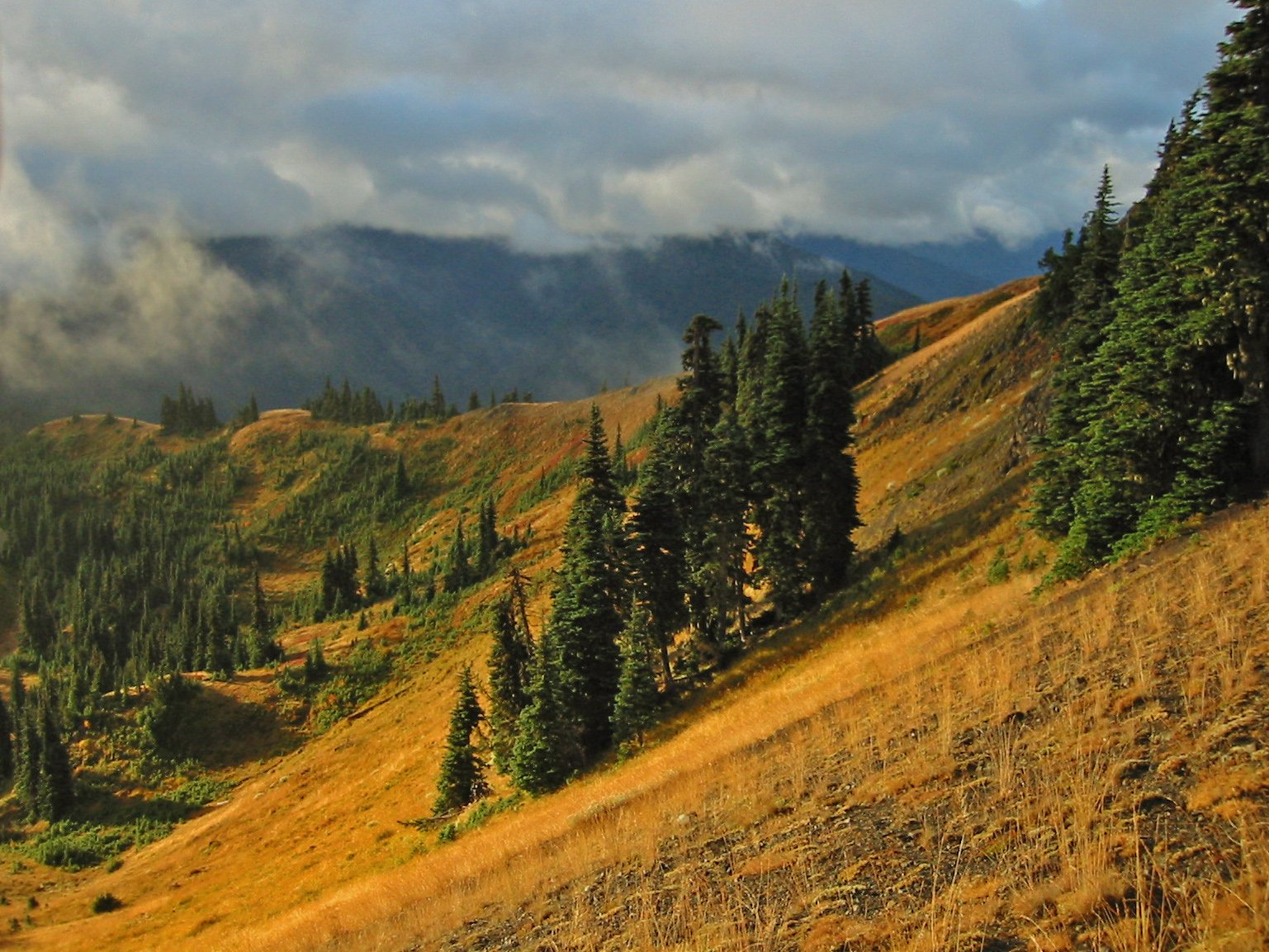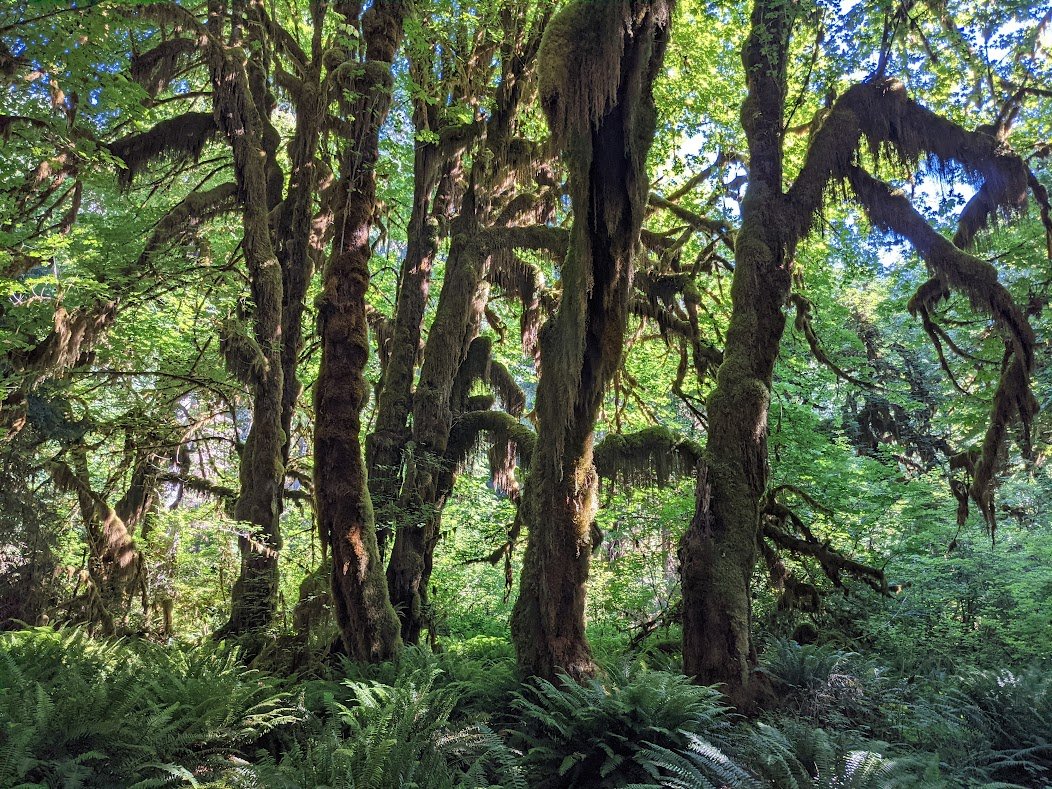Olympic National Park is a diverse wilderness area in Washington State, offering visitors a unique blend of ecosystems from rugged coastlines to lush rainforests and alpine peaks. This guide provides essential advice for planning your visit, including trail recommendations, wildlife safety, weather precautions, and camping guidelines. Whether you’re a first-time visitor or a seasoned hiker, these tips will help you make the most of your Olympic National Park experience.
What Are the Must-Know Trail Recommendations for Olympic National Park?

Olympic National Park boasts an extensive network of trails catering to various skill levels and interests. Here are some top recommendations:
- Hoh Rain Forest Trails:
- Hall of Mosses Trail: An easy 1-mile loop with minimal elevation gain (100 feet)
-
Hoh River Trail: A more challenging 10.6-mile roundtrip to Five Mile Island
-
Hurricane Ridge Area:
-
Hurricane Hill Trail: A moderate 3.2-mile roundtrip with 650 feet elevation gain
-
Sol Duc Area:
-
Sol Duc Falls Trail: An easy 1.6-mile roundtrip with 200 feet elevation gain
-
Lake Crescent Area:
-
Marymere Falls Trail: A family-friendly 2-mile roundtrip with 400 feet elevation gain
-
Mount Storm King:
- A strenuous 4-5.5 mile roundtrip with 2,065 feet elevation gain
| Trail Name | Difficulty | Distance (roundtrip) | Elevation Gain | Time Required |
|---|---|---|---|---|
| Hall of Mosses | Easy | 1 mile | 100 feet | 30 min – 1 hour |
| Hurricane Hill | Moderate | 3.2 miles | 650 feet | 2-3 hours |
| Sol Duc Falls | Easy | 1.6 miles | 200 feet | 1.5 hours |
| Marymere Falls | Easy | 2 miles | 400 feet | 1.5 hours |
| Mount Storm King | Strenuous | 4-5.5 miles | 2,065 feet | 4-7 hours |
How Can I Stay Safe from Wildlife in Olympic National Park?

Wildlife encounters are a thrilling part of visiting Olympic National Park, but safety should always be a priority. Follow these guidelines:
Bear Safety:
- Store food and scented items in bear-proof containers or hang them at least 10 feet off the ground and 4 feet from the trunk
- Make noise while hiking to avoid surprising bears
- If you encounter a bear, stay calm and slowly back away without turning your back
Cougar Safety:
- Keep children close and within arm’s reach
- Avoid hiking during dawn, dusk, or night when cougars are most active
- If you encounter a cougar, maintain eye contact, don’t run, and try to appear larger
General Wildlife Safety:
- Maintain a safe distance from all wildlife (100 yards for bears, 25 yards for other animals)
- Never feed wildlife as it can lead to aggressive behavior and dependency
What Weather Precautions Should I Take in Olympic National Park?
Olympic National Park’s weather can be unpredictable and varies greatly depending on the region and elevation. Here’s what you need to know:
Temperature Ranges:
- Summer: Mild, often 60s-70s°F (15-21°C)
- Winter: Cold, often below freezing with significant snowfall at higher elevations
- Spring and Fall: Cool to mild with occasional rain
Precipitation:
The park is known for high rainfall, especially in rainforest areas. Be prepared with waterproof gear and layers.
Recommended Gear:
- Waterproof clothing and footwear
- Layered clothing for changing conditions
- Warm clothing for winter months
- Sunscreen and insect repellent for summer
- Snowshoes or crampons for winter hiking in snowy areas
What Are the Camping Guidelines in Olympic National Park?
Camping is a popular way to experience Olympic National Park. Here’s what you need to know:
Campsite Reservations:
- Make reservations through recreation.gov or call (877) 444-6777
- Some sites are available on a first-come, first-served basis
Campground Amenities:
- Vary by location but often include restrooms, potable water, and picnic tables
- Some campgrounds offer flush toilets and showers
Fire Regulations:
- Campfires allowed in designated sites but must be fully extinguished before leaving
- Follow any specific fire restrictions due to weather conditions
Maximum Stay Limits:
- Typically 14 days in a 30-day period, though some campgrounds may have shorter limits
How Can I Plan a Sustainable Visit to Olympic National Park?
To help preserve the park’s natural beauty for future generations:
- Practice Leave No Trace principles
- Stay on designated trails to prevent erosion
- Properly dispose of waste and use recycling facilities when available
- Use reusable water bottles and containers to reduce plastic waste
- Respect wildlife by observing from a distance and not feeding animals
- Use public transportation or carpool when possible to reduce emissions
What Are Some Lesser-Known Areas of Olympic National Park Worth Exploring?
While popular spots like Hurricane Ridge and Hoh Rain Forest are must-sees, consider these less crowded areas:
- Deer Park: Offers stunning alpine views and stargazing opportunities
- Shi Shi Beach: A remote coastal area known for its rugged beauty
- Quinault Rain Forest: Less visited than Hoh, but equally lush and beautiful
- Staircase: A quieter entrance with old-growth forests and river views
- Dosewallips: Ideal for wildlife viewing, especially Roosevelt elk
How Can I Make the Most of My Olympic National Park Visit in Different Seasons?
Each season offers unique experiences in Olympic National Park:
Spring:
- Witness wildflower blooms in lower elevations
- Enjoy waterfalls at their fullest
- Be prepared for muddy trails and potential snow at higher elevations
Summer:
- Best time for hiking and camping
- Access to all areas of the park, including high-elevation trails
- Busiest season, so make reservations early
Fall:
- Experience beautiful fall colors, especially in deciduous forests
- Enjoy fewer crowds and cooler temperatures
- Be prepared for early snow at higher elevations
Winter:
- Try snowshoeing or cross-country skiing at Hurricane Ridge
- Witness dramatic storm-watching along the coast
- Many facilities and roads close, so check current conditions
By following this Olympic National Park advice, you’ll be well-prepared for an unforgettable adventure in one of America’s most diverse and beautiful national parks. Remember to always check current park conditions and regulations before your visit, as they may change seasonally or due to unforeseen circumstances.
References:
- More Than Just Parks: 9 EPIC Hikes in Olympic National Park (Expert Guide + Video)
- Wildland Trekking: Olympic National Park 10 Best Hikes
- Wheatless Wanderlust: Hiking In Olympic National Park: A Guide For First Timers
- National Park Service: Olympic National Park
- Recreation.gov: Olympic National Park Camping

